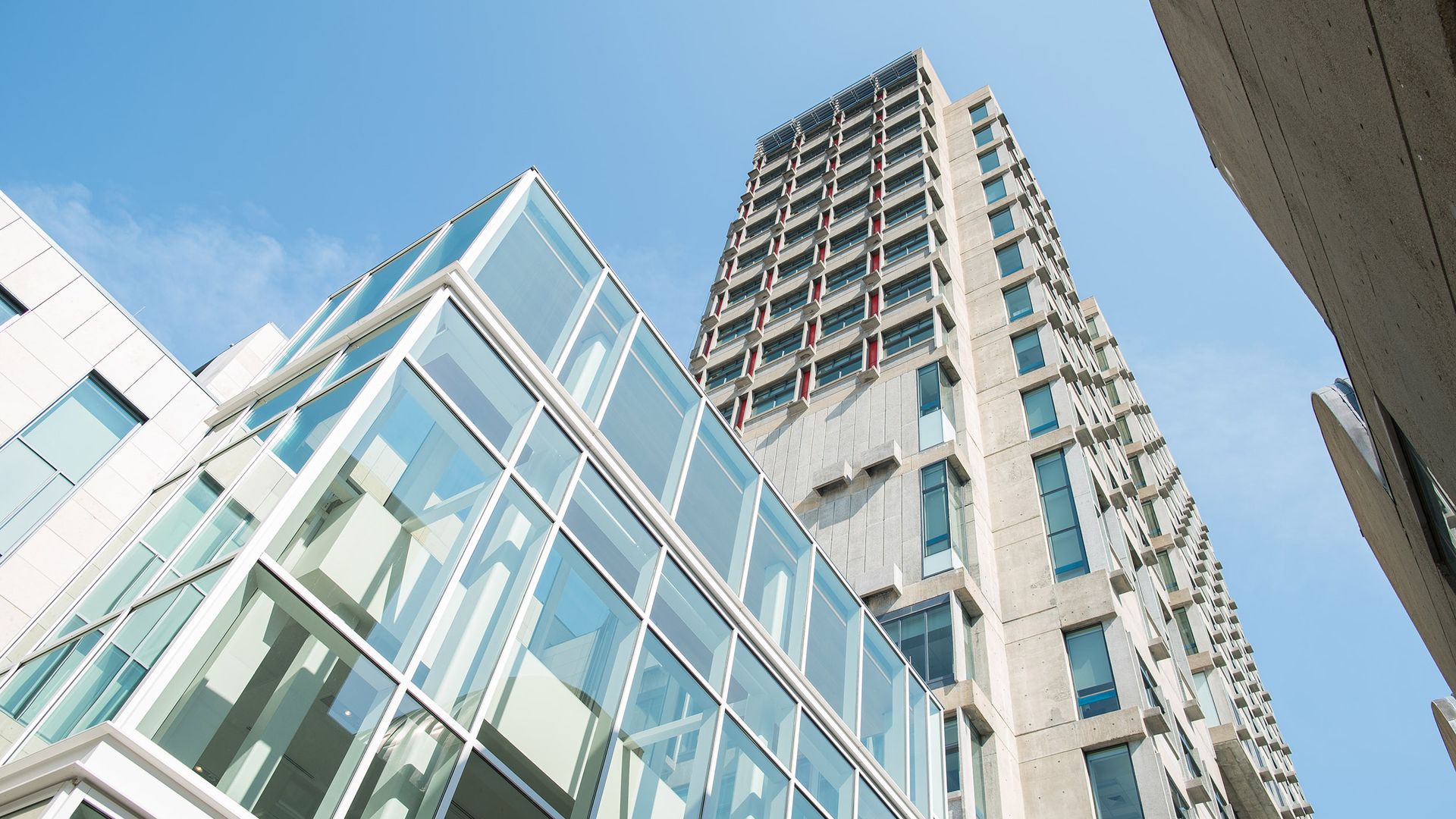Where LAW Calls Home
The spaces where BU Law’s community has come together to connect and learn.
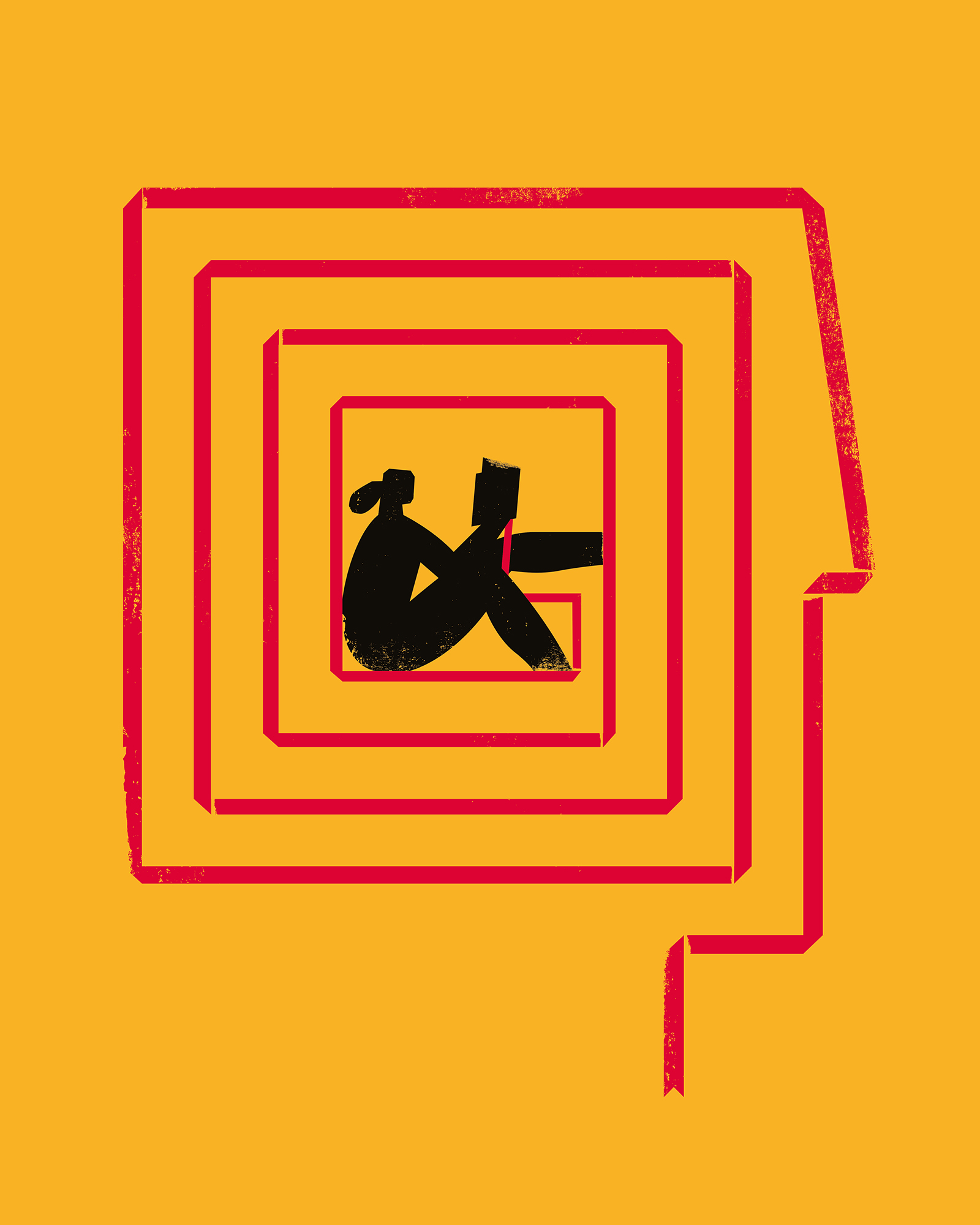
Illustration by The Project Twins
Where LAW Calls Home
The spaces where BU Law’s community has come together to connect and learn.
Throughout the school’s 150th anniversary year, The Record will publish selections from 150/150: PEOPLE, PLACES, PRECEDENTS, a commemorative book featuring 150 profiles of people, places, and events that have shaped the school and the world.
As BU Law evolved over the years, so did the places we called home. The 13 professors who made up the founding faculty taught 60 students from a single lecture hall in downtown Boston. The location, close to courts, libraries, and the State House, was ideal for a small school just starting out.
Over time, the study body grew and the school’s needs changed, requiring new buildings with amenities better fit to serve the community. From Bromfield Street to Commonwealth Avenue, these are the spaces where we’ve come together to connect and learn.
36 Bromfield Street, Wesleyan Building
On October 2, 1872, BU Law opened its doors to a student body of approximately 60 students at 36 Bromfield Street in downtown Boston.
Margaret der Hagopian (PAL’47,’49), who served as assistant to the dean, wrote about the momentous day in the “History of Boston University School of Law”: “Thus, the infant law school, with its distinguished dean and faculty, supported by its learned and egalitarian president and founders, opened at 36 Bromfield Street in downtown Boston and began its journey.”
During its first year at 36 Bromfield Street, BU Law occupied Wesleyan Hall, a lecture space that featured a modest library of law reports and textbooks. An adjacent room served as an office for the dean and administrators. In 1873, just a year after opening, the school relocated a few blocks away to 18-20 Beacon Street. However, the facilities at the new location were small and not suitable for the law school. Eventually, all classes, as well as the administrative offices and library, returned to the Wesleyan Building.
By 1883, enrollment at BU Law had grown to 184, the highest since the school opened. In spite of expanding to occupy most of the third floor, the law school needed more space. The following year, the trustees purchased 10 Ashburton Place, a six-story building on Beacon Hill, which became the new home of BU Law.
The Wesleyan Building later became the home for Emerson College of Oratory, known today as Emerson College.
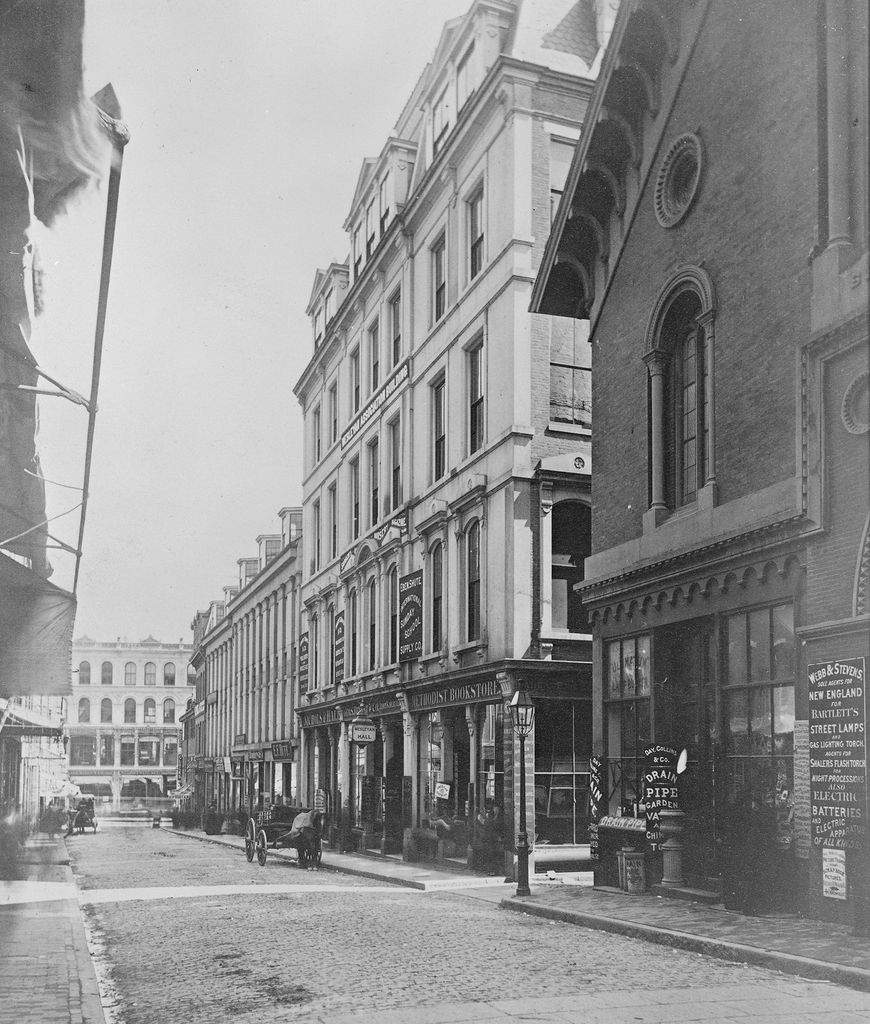
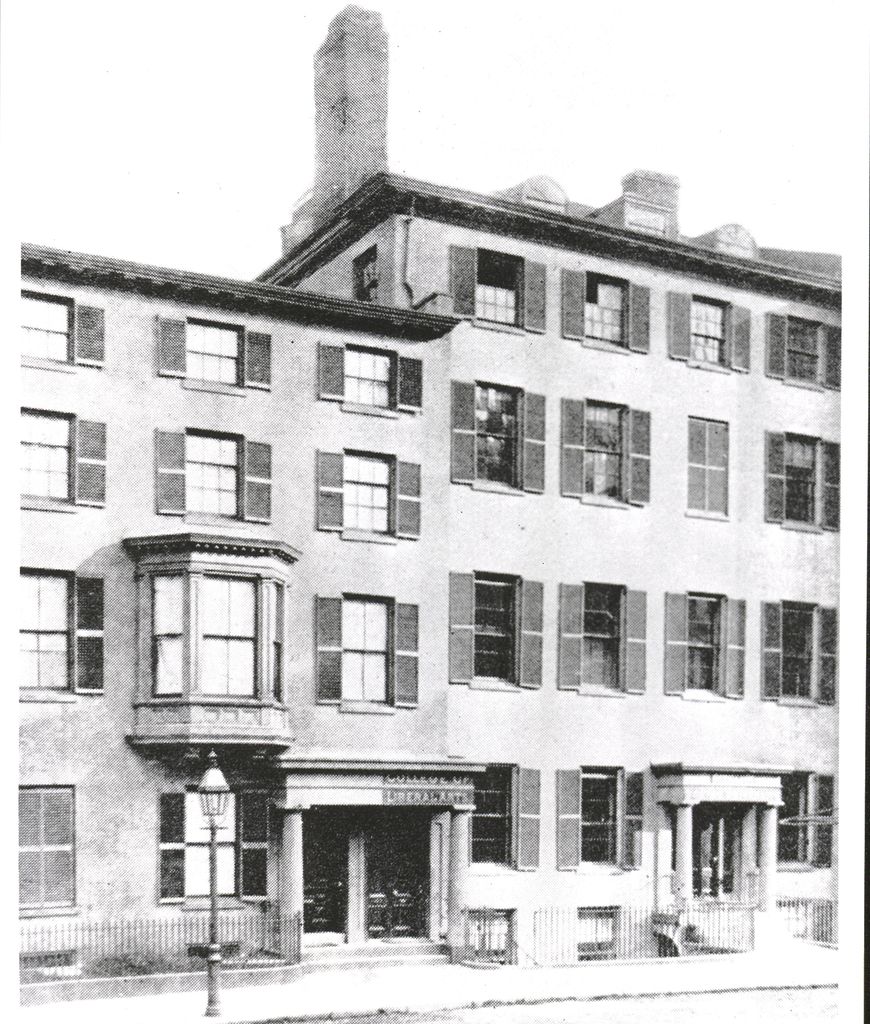
Left: 36 Bromfield Street, Boston. Home to BU Law from 1872 to 1873 and 1874 to 1884.
Right: 18–20 Beacon Street, Boston. Home to BU Law in 1873.
11 Ashburton Place, Isaac Rich Hall
BU Law experienced growing pains and moved several times during its first two decades of operation. That is, until 1895, when Boston University purchased 11 Ashburton Place.
Formerly the site of the Mount Vernon Church, the space was completely renovated to suit the needs of the burgeoning law school. Among its features: a moot courtroom, a library filled with more than 12,000 volumes, and a main lecture hall with seating for 500.
The building, also known as Isaac Rich Hall, was dedicated on January 8, 1897. Judge Oliver Wendell Holmes Jr. delivered his historic speech, “The Path of the Law,” at the ceremony.
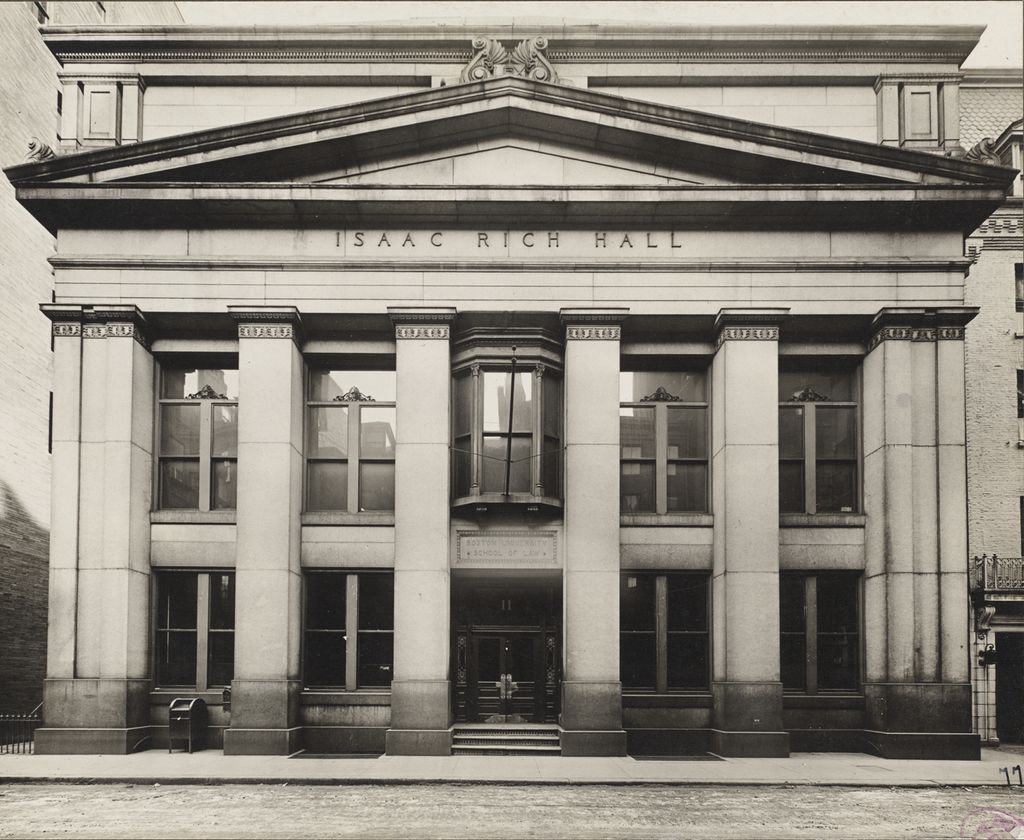
11 Ashburton Place, Boston. Home to BU Law from 1897 to 1964.
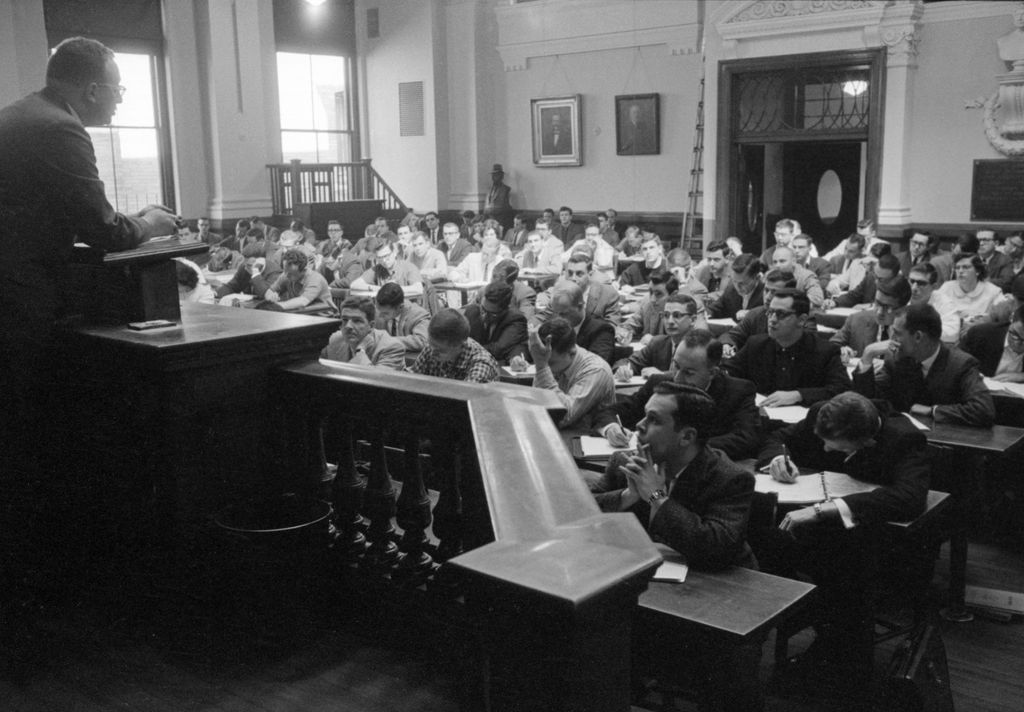
Dean and Professor Elwood Hettrick teaches a class at 11 Ashburton Place in 1958.
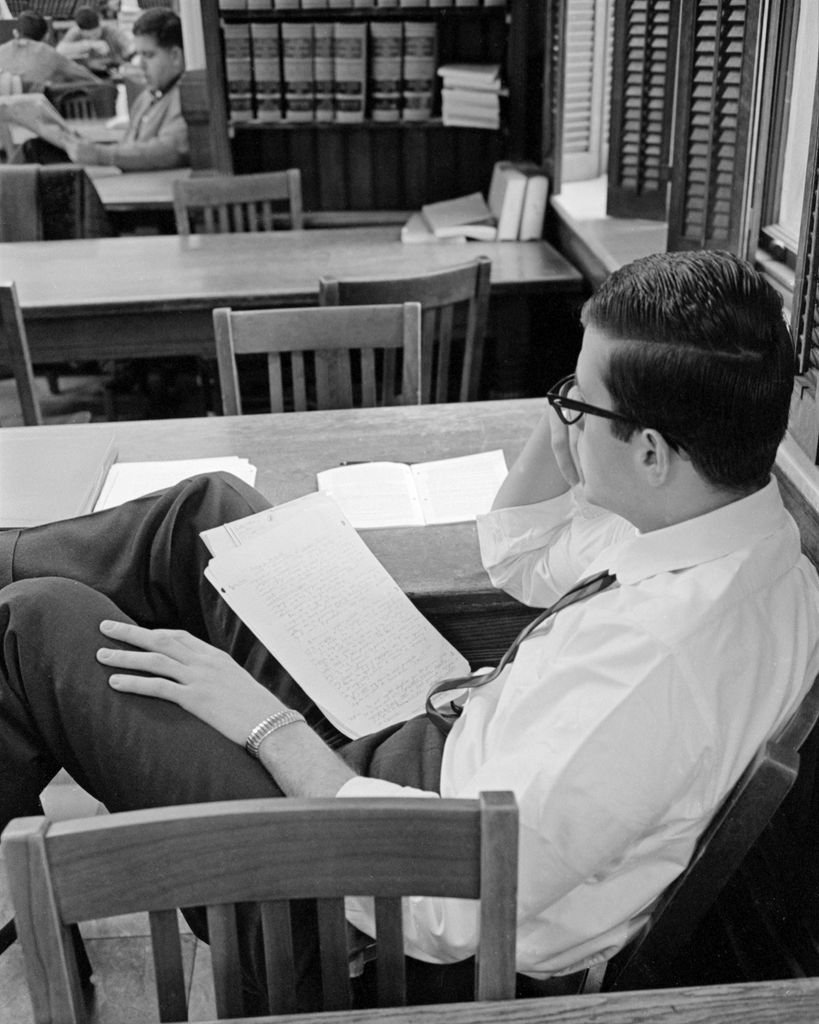
A student in the library at 11 Ashburton Place just before the move to the law tower in 1964.
Left: Dean and Professor Elwood Hettrick teaches a class at 11 Ashburton Place in 1958.
Right: A student in the library at 11 Ashburton Place just before the move to the law tower in 1964.
765 Commonwealth Avenue, the Law Tower and Sumner M. Redstone Building
For nearly 80 years, BU Law had taken up residence in several locations in downtown Boston. However, by the early 1950s, it had become apparent that the facilities on Beacon Hill had grown inadequate and outdated.
After studying possible sites, the University agreed to build a 17-story structure on the banks of the Charles River. In May 1959, before a crowd of 500 BU Law alumni, BU President Harold Case announced plans for the facility.

On October 29, 1964, US Supreme Court Chief Justice Earl Warren addressed the BU community at the dedication of the law tower at 765 Commonwealth Avenue. “Your president and board of trustees, the donors who made this building possible, and your faculty are planning for life and for the lives of generations to come,” he told the crowd.
In the early days, the law school occupied the first eight floors and the BU School of Education occupied the floors above. In 1970, the law school took over the ninth floor, and in 1981 when the School of Education moved to its current home at 605 Commonwealth Avenue, BU Law took over all floors.
By the turn of the 21st century, external and internal issues had surfaced in the tower. For example, it could take as long as 20 minutes for a student to travel from one class to another utilizing one of the building’s six small elevators.
In 2008, the University announced a two-phased master plan for the law tower’s restoration, renovation, and expansion. The first phase focused on constructing the adjoining 100,000-square-foot Sumner M. Redstone Building.
The second phase focused on a complete renovation of the law tower, which included restoring the building’s facade, replacing mechanical, electrical, and plumbing systems, and updating window and metal panels with energy-efficient units. The Pappas Law Library also received cosmetic and structural upgrades.
When the Sumner M. Redstone Building opened its doors to students and faculty in September 2014, it instantly transformed the BU Law experience. “From the bright and open atrium to the beautiful views of the Charles River, to the brand new student commons and cafe, this is a whole new BU Law,” said Maureen O’Rourke, dean emerita.
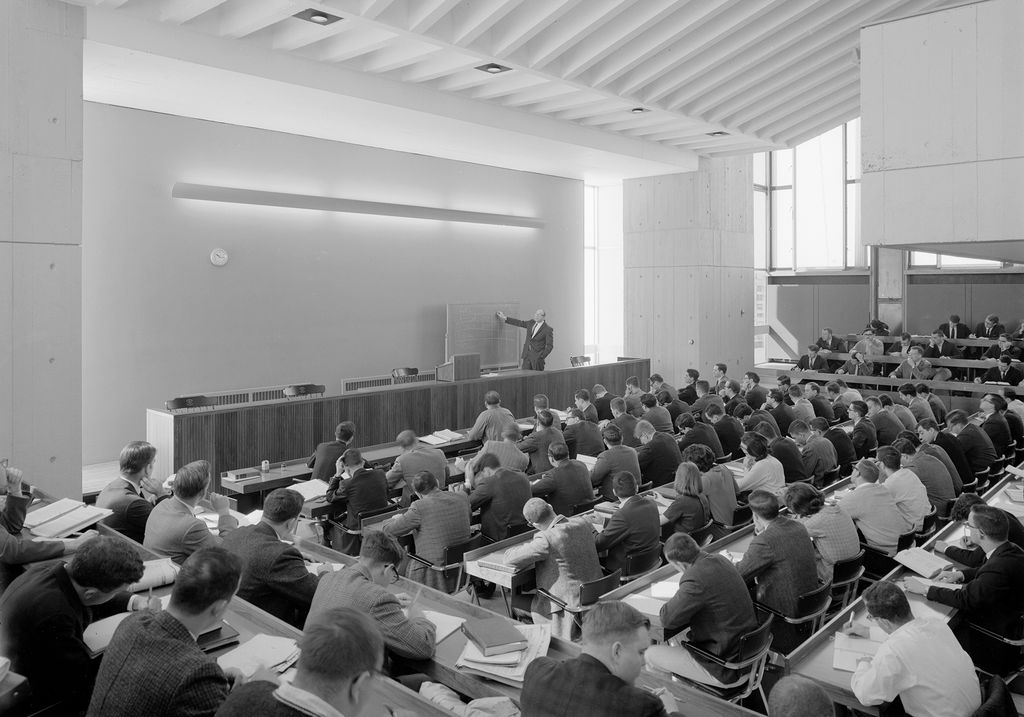
Professor (and future dean) William Schwartz teaches one of the first classes in the law tower in 1964.

Professor Daniela Caruso teaches a 2019 class in the Sumner M. Redstone Building.
Left: Professor (and future dean) William Schwartz teaches one of the first classes in the law tower in 1964.
Right: Professor Daniela Caruso teaches a 2019 class in the Sumner M. Redstone Building.
The five-story structure bears the name of Sumner M. Redstone (Hon.’94), the former chairman of Viacom and CBS who taught at BU Law from 1982 to 1985 and is credited with developing the school’s first entertainment law class. Redstone’s generous gift of $18 million toward the project was bolstered by pledges from alumni, faculty, and staff. By the end of the capital campaign, the school had raised $44 million for the new building and the refurbished law tower.
The project broke ground in 2008 with the construction of the Redstone building, which houses classrooms, spaces to gather, and the Samuel M. Fineman Law Library. “It was previously a vertical school of law with all of the classrooms stacked on top of each other,” explained Leland Cott, a founding principal of Bruner/Cott & Associates, the lead architecture firm on the project. “What the school wanted was a more horizontal school of law.”
The Redstone building delivered on that wish with learning spaces that encourage collaboration and open areas, such as the glass-enclosed Robert T. Butler Atrium, which invites students, faculty, and visitors to gather and interact. The structure also includes modern features that improve air, environmental, and acoustic quality.
For current and future students, the Redstone building serves as a symbol of opportunity. “I think all of us had a wow moment when we entered the new building,” said Meghan Kelly (’15). “To be able to have this beautiful building and these resources backing us is a source of pride for all students.”
This Series
Also in
LAW150
-
June 7, 2023
Models for Modern Law
-
May 23, 2023
LAW Memories
-
May 16, 2023
The 150th: Vladimir Egiyan
